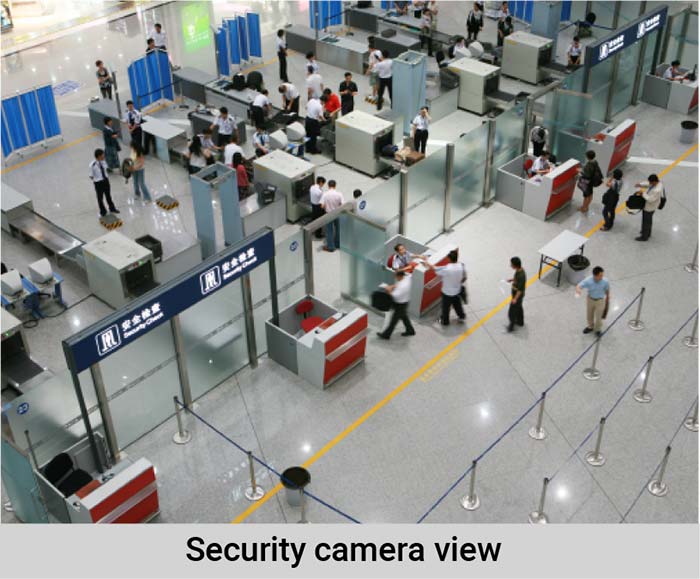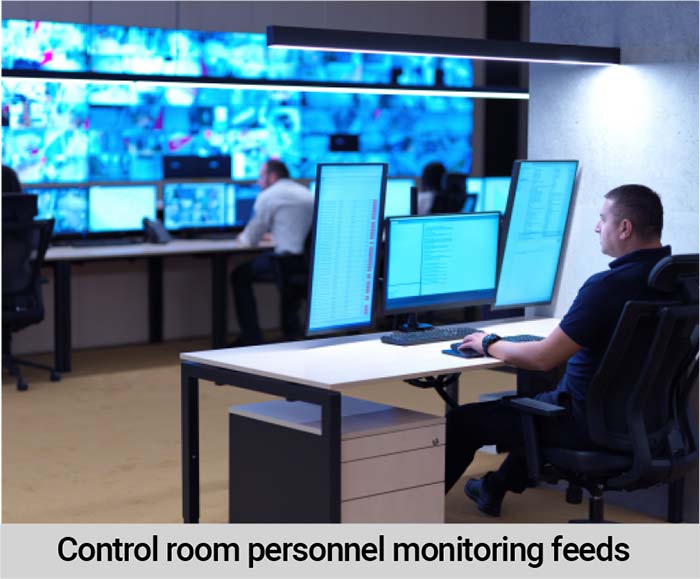Overview and application
A traditional camera security system was meant to record and monitor specific areas. The system was developed so when an event occurs, one can go back, and rewind to the time of theevent in hopes to find answers or perpetrators. However, in the ever-changing world we live in today, prevention beats recovery. The need for real-time event updates soon became a necessityto ensure the safety of citizens in public. Imagine a central command room filled with monitors and personnel staring at the live feeds to nitpick the tiniest of actions that may mean the difference between life and death.


With the ever-growing population, public spaces are getting larger, some megastructures may have as many as 1000+ cameras. With the control room rotating 1000+ camera views and about a dozen pairs of eyes looking for possible danger, there is always going to be a blindspot for unchecked feeds. Some theme parks have vehicles mounted with cameras that capture live feeds wherever they go, and this just adds complexity to what is already a difficult job.
As technology advances, there are now deep learning AI-capable computers that can act as the eyes of hundreds of security personnel that can constantly check the live video feeds for suspicious acts, even if the video feed is not displayed on a monitor (near-zero blindspots). The computers are programmed and designed to recognize a person’s joints/ limbs for specific movements, any left behind packages are tagged and immediately shown on the monitors. The benefit of such systems is that there are nearly blindspots where every frame of each video is analyzed by the computer.
Challenges
 Utilizing edge-AI technology to analyze mass video feeds seem like the perfect solution but there are challenges involved. To deploy a real-time edge AI monitoring system in a large open space, you will come across similar challenges as if you were deploying a roadside unit.Things to consider are:
Utilizing edge-AI technology to analyze mass video feeds seem like the perfect solution but there are challenges involved. To deploy a real-time edge AI monitoring system in a large open space, you will come across similar challenges as if you were deploying a roadside unit.Things to consider are:
Power delivery
Most roadside power deliveries are high-powered AC mains with some supplying low voltage 18V in the boost section of the circuit. If the system/ camera are mounted on a vehicle, the power option becomes even more restricted.
Cabling needs
The need to connect to multiple cameras may require data and power cables.
Camera support
The supported camera type must endure weather conditions and variable lighting while still offer detection and recognition capabilities.
Edge-AI computer capability
The deployed computer must be AI-enabled for edge processing and powerful enough to detect multiple sources simultaneously.
Environmental factors
Direct sunlight may result in overheating, and wind may cause shaking or vibration, depending on the mounting location. While shock and vibration during the vehicle’s movement are challenges the system needs to conquer.
Means of data communication
The monitoring system would require multiple points of deployment, the computer needs to be able to transmit and upload the data instantaneously for real-time alerts.
Solution
Our customer initially developed a system that can detect and recognize people’s limbs and joints. By recognizing the limbs, the system can track a person’s movement, such as the kneeling motion. Or through, deep learning, you can teach the computer to recognize a specific movement/ gesture. For example, the actions of throwing a right/ left hook at another person.

To have a system mounted, or that can operate in in-vehicle conditions, and have cameras operate in various lighting conditions while in the rain, our customer chose to utilize the Neousys NRU series edge computers. It supports GMSL cameras that have IP67 waterproof characteristics, high dynamic range (>120dB HDR), auto white balance (AWB), and LED flickering mitigation (LFM), and is not affected by lighting conditions, sunny, overcast, or the dark. The NRU series edge computer is powered by NVIDIA® Jetson AGX Xavier which offers TFLOPS inference performances, perfect for image recognition applications.
The NRU series systems are also tested to be compliant with MIL-STD-810G to withstand shock and vibration conditions of a moving vehicle; are compact enough to fit into confined space installations; come with ignition power control to protect the computer from power surges at startups; and offer true wide temperature operation capabilities.






